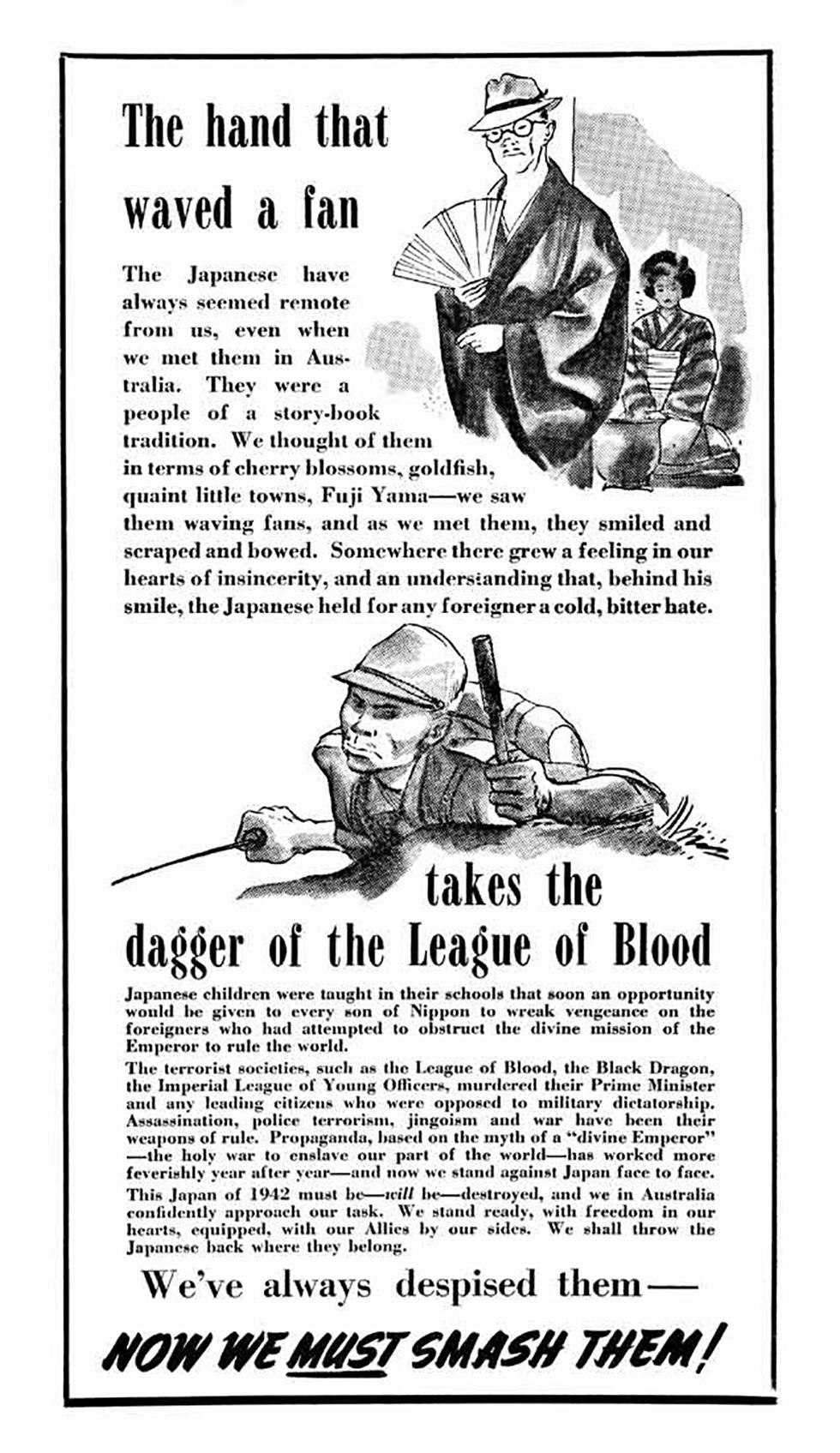
War propaganda poster.
Aboriginal and Torres Strait Islander people should be aware that the National Archives' website and collection contain the names, images and voices of people who have died.
Some records include terms and views that are not appropriate today. They reflect the period in which they were created and are not the views of the National Archives.


War propaganda poster.
[Large text:] The hand that waved a fan
[A black and white drawing of a Japanese man in traditional Japanese clothing, a fedora hat, and glasses, holding a fan. Seated behind him is a drawing of a woman wearing a kimono.]
The Japanese have always seemed remote from us, even when we met them in Australia. They were a people of a story-book tradition. We thought of them in terms of cherry blossoms, goldfish, quaint little towns, Fuji Yama – we saw them waving fans, and as we met them, they smiled and scraped and bowed. Somewhere there grew a feeling in our hearts of insincerity, and an understanding that, behind his smile, the Japanese held for any foreigner a cold, bitter hate.
[Black and white drawing of a Japanese soldier lying on a ridge, holding a dagger and sword.]
[Large text:] takes the dagger of the League of Blood
Japanese children were taught in their schools that soon an opportunity would be given to every son of Nippon to wreak vengeance on the foreigners who had attempted to obstruct the divine mission of the Emperor to rule the world.
The terrorist societies, such as the League of Blood, the Black Dragon, the Imperial League of Young Officers, murdered their Prime Minister and any leading citizens who were opposed to military dictatorship. Assassination, police terrorism, jingoism and war have been their weapons of rule. Propaganda, based on the myth of a “divine Emperor” – the holy war to enslave our part of the world – has worked more feverishly year after year – and now we stand against Japan face to face.
This Japan of 1942 must be – will be – destroyed, and we in Australia confidently approach our task. We stand ready, with freedom in our hearts, equipped, with our Allies by our sides. We shall throw the Japanese back where they belong.
[Large text:] We’ve always despised them –
[Large, bold, italicised text:] NOW WE MUST [underlined] SMASH THEM!
This is a black-and-white Australian propaganda poster with the heading 'The hand that waved a fan takes the dagger of the League of Blood'. At the bottom of the poster is the text 'We've always despised them - NOW WE MUST SMASH THEM! At the top of the poster, an illustration shows a Japanese man in traditional dress waving a fan, and, seated behind him, a woman in a kimono. A second illustration shows a Japanese soldier wielding a dagger and a sword.
Learn how to interpret primary sources, use our collection and more.
